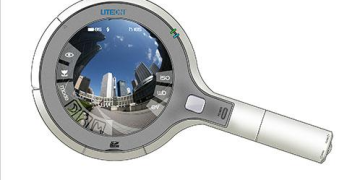Introduction
In today’s digital landscape, where users access content on a multitude of devices, responsive design has become essential for delivering seamless and engaging digital experiences. Responsive design refers to the approach of creating websites and applications that adapt to the user’s device, providing optimal viewing and interaction across a range of screen sizes and resolutions.
Evolution of Digital Devices
The proliferation of smartphones, tablets, and other mobile devices has fundamentally changed how users access the internet. With the increasing popularity of mobile browsing, websites and applications must be designed to accommodate the diverse array of devices and screen sizes in use today.
Challenges of Traditional Design Approaches
Traditional design approaches often fail to provide a satisfactory user experience on smaller screens, leading to issues such as content cutoff, distorted layouts, and difficult navigation. Incompatibility with various devices can result in frustrated users and lost opportunities for engagement and conversion.
Principles of Responsive Design
Responsive design is guided by principles such as fluid grids and flexible layouts, which allow content to adapt seamlessly to different screen sizes. Media queries enable designers to apply specific styles based on factors such as screen width, orientation, and resolution, ensuring a consistent and optimized experience across devices.
Benefits of Responsive Design
The primary benefit of responsive design is the ability to deliver a consistent user experience regardless of the device being used. By optimizing content for different screen sizes, responsive design enhances accessibility and usability, leading to higher engagement and satisfaction among users.
Implementing Responsive Design
A mobile-first approach involves designing for mobile devices first, then progressively enhancing the experience for larger screens. Alternatively, graceful degradation starts with a fully featured desktop version and scales down functionality for smaller devices. Both approaches have their merits, depending on the project requirements and target audience.
Responsive Design Techniques
Flexible images and media allow content to resize and adapt to different screen sizes without losing quality or clarity. Content prioritization involves identifying key elements and arranging them in a hierarchy that ensures important information is accessible on all devices, regardless of screen size.
Testing and Optimization
Cross-device compatibility testing is essential to identify and resolve any issues that may arise across different devices and browsers. Performance optimization techniques, such as optimizing images and reducing server response times, help ensure fast loading times and smooth performance across all devices.
Case Studies of Successful Implementation
Numerous websites and applications have successfully implemented responsive design, resulting in improved user engagement and conversion rates. Examples include e-commerce platforms, news websites, and corporate websites that have seen significant improvements in user experience and business metrics after adopting responsive design.
Future Trends in Responsive Design
The future of responsive design lies in harnessing emerging technologies such as artificial intelligence (AI) to create more intelligent and adaptive experiences. Integration with technologies like augmented reality (AR) and virtual reality (VR) will further enhance the immersive and interactive capabilities of responsive design.
Challenges and Solutions
Designing for responsiveness requires striking a balance between aesthetics and functionality. Performance issues on older devices can be addressed through optimization techniques and progressive enhancement strategies that prioritize core functionality over advanced features.
Impact on SEO
Responsive design plays a crucial role in search engine optimization (SEO), as Google and other search engines prioritize mobile-friendly websites in search rankings. By ensuring a consistent experience across devices, responsive design improves user satisfaction and engagement metrics, which are factors considered by search algorithms.
User Experience Considerations
Navigation and interaction patterns vary across devices, requiring careful consideration and testing to ensure intuitive and efficient user experiences. User feedback and iteration are essential for continuous improvement, as user preferences and device capabilities evolve over time.
Accessibility in Responsive Design
Designing for accessibility involves ensuring that websites and applications are usable by individuals with disabilities. Responsive design can enhance accessibility by providing flexible layouts and adaptable interfaces that accommodate different user needs and preferences.
Conclusion
In conclusion, responsive design is essential for optimizing digital experiences across devices in today’s mobile-centric world. By adhering to principles such as fluidity, flexibility, and adaptability, designers can create experiences that are accessible, engaging, and impactful. As technology continues to evolve, responsive design will remain a cornerstone of digital innovation, enabling brands to connect with users wherever they are, on any device.

FAQs After The Conclusion
- What is responsive design?Responsive design is an approach to web design that ensures websites and applications adapt to the user’s device, providing an optimal viewing and interaction experience across various screen sizes and resolutions.
- Why is responsive design important?Responsive design is important because it ensures a consistent user experience across devices, improves accessibility and usability, and enhances engagement and satisfaction among users.
- What are some common challenges in implementing responsive design?Common challenges in implementing responsive design include compatibility issues across devices and browsers, performance optimization for faster loading times, and balancing design aesthetics with functionality.
- How does responsive design impact search engine optimization (SEO)?Responsive design positively impacts SEO by improving user engagement and satisfaction metrics, which are factors considered by search algorithms. Mobile-friendly websites are prioritized in search rankings, leading to higher visibility and traffic.
- What are some future trends in responsive design?Future trends in responsive design include the integration of artificial intelligence (AI) for more intelligent and adaptive experiences, as well as the incorporation of emerging technologies such as augmented reality (AR) and virtual reality (VR) for enhanced interactivity.
- How can I ensure my website is responsive?You can ensure your website is responsive by following best practices such as using fluid grids and flexible layouts, implementing media queries for device adaptation, and conducting thorough testing across different devices and screen sizes.
- What role does user feedback play in responsive design?User feedback is crucial in responsive design for identifying usability issues, gathering insights into user preferences and behaviors, and iterating on design improvements to enhance the overall user experience.
- What are some resources for learning more about responsive design?There are numerous resources available for learning more about responsive design, including online courses, tutorials, and design communities. Websites such as Codecademy, Udemy, and Smashing Magazine offer valuable insights and practical guidance on responsive design principles and techniques.
















